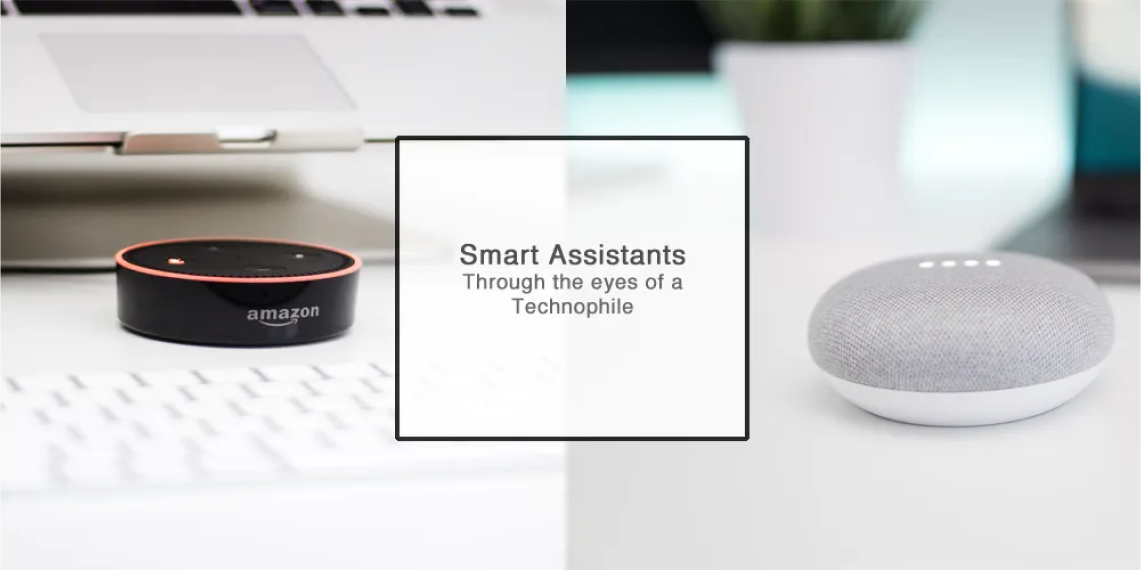Blogs
Smart Assistants: In the home of a Technophile (Part 1)
Durga Prasad
Posted On May 23, 2023

A small, compact device was perched on a corner table; at first glance it looked like a regular speaker nothing extraordinary. But contrary to our initial impression, this was a voice controlled ‘smart’ speaker powered by an intelligent personal assistant.
These smart speakers seem to be catching on amongst the younger, tech-savvy generation in India. So in order to get a better understanding of this trend, we decided to visit some of these homes and take a detailed look at how these devices fit into the day-to-day lives of these people and if they are truly delivering on their promise to transform lives.
Reasons to buy
Technology has become much more affordable and the average Indian has also become much more aware of how it can help bring convenience into their lives. They are also looking for coherence in their purchases and seek things that work well together.
In the case of smart devices, people purchased products that fit well with the other devices they owned. Whether they bought Amazon Echo, or the Google Home, their purchase was influenced by their need to have them fit seamlessly into their ‘technological ecosystem’ rather than as isolated devices.
“I have a Google Pixel and a Chromecast…Google home helps to have a better connectivity with everything. It was a conscious decision not to buy Alexa. We wanted something that talks to Chromecast.”
Overall, people bought the device primarily to reduce their interactions with individual devices and instead communicate with just one that takes care of everything else. And what is better than a speaker that can talk to you and assist you with your routine tasks!
The reason to integrate everything into a single system was the primary driver of purchase.
Usage
“The product is very nice but I don’t know what to do with it. Maybe that’s why (my interest) is diminishing .”
The set-up and app based onboarding experience was simple and seamless, however expanding usage to newer contexts was not well supported. The initial novelty and excitement lead to users trying out many use cases such as,
- Listening to music
- Playing games
- Search/ General Q&A
- News, Weather & Time updates
But once the initial excitement wore off, usage slowly got focused on tasks like play music either through their phones, or stream music through Chromecast on their TVs. Keeping people up to date with their day’s schedules, and setting alarms and reminders were some other tasks that were regularly entrusted to the smart device.
Expectations in Usage
Apart from acting as a entertainment hub and setting reminders, people expected the device to make their homes smarter. They commented that in the future such a device would manage their home’s lightings, temperature, and security. Given this aspiration, they look at installation of smart lights, switches and cameras as an immediate priority.
In a typical household where both the husband and wife work, people admit to becoming more forgetful. They forget to switch off the lights when they leave the room, switch off the geyser after use, leave the AC on during the summers in the anticipation of getting a cooler room etc. People want to have these conveniences without wasting electricity.
“So many times we forget to switch off the geyser and then there is an argument about who should go and switch it off. I would like to install a smart switch for the geyser so that it can be controlled by Alexa.”
Furthermore, erratic work schedules and lesser time at hand is one of the many reasons grocery apps like big-basket are so popular amongst the younger people. People with smart devices want an integration of such apps to make grocery shopping much more convenient than it is now. They also wish for their personal assistant to keep a track of their shopping lists and even place an order on their behalf.
All these expectations boil down to one factor, convenience; they want the routine tasks taken care off so that they can focus on more meaningful things.
Overall Experience
When asked about their experience so far, people felt the smart device served its purpose but they were not sure if it had any significant impact on their lives.
The major sore spot was the constant effort put in by the people in asking things to the device. The effort required was in conflict with their expectations of a device that delivers great convenience.
They wanted the device to be a learning system that would adapt and learn according to their needs and patterns. At the moment, to ask Google Home to play something from YouTube, they had to start with the wake up phrase “Ok Google” or “Hey Google”. These strict rules while talking to the device marred their overall experience with the device.
“What I don’t like is the effort that I put in by asking ‘Ok, Google…’ ….Feels very stupid saying that all the time. Even if it was a little conversational I might have liked it more.”
People felt that the whole point of a personal assistance powered smart device was to make their lives uncomplicated and memorizing the right ways to talk to the device was only making things more frustrating.
People felt that the interactions with the device needs to be more conversational to make it seem more natural.
In Conclusion
Smart homes still seems to be a far-fetched dream for a lot of people. Building a seamless eco-system of connected devices is quite costly. Things like smart switches, smart lights are not within the means for a lot of Indian households.
Connecting the device to more Indian apps would go a long way in contributing to the success of these smart devices in India.

An experienced CEO with a demonstrated history of creating a business in the design industry that delivers sustained growth, industry-leading profits through an unerring focus on customers & employees. With deep expertise in UX research across diverse sectors, he offer invaluable insights on customer-centricity and fostering success in business.


